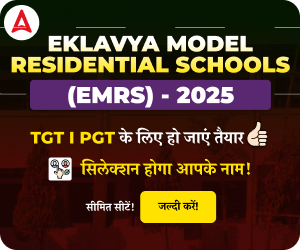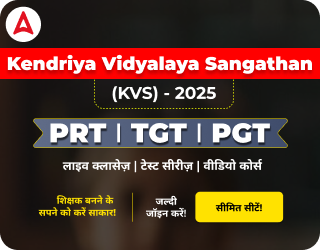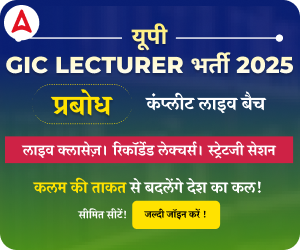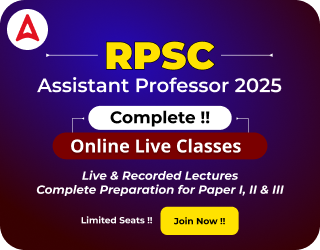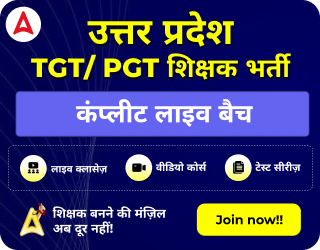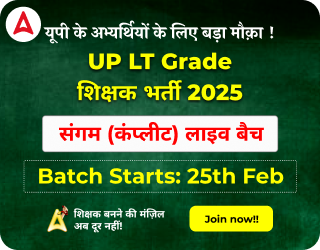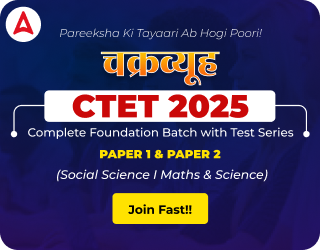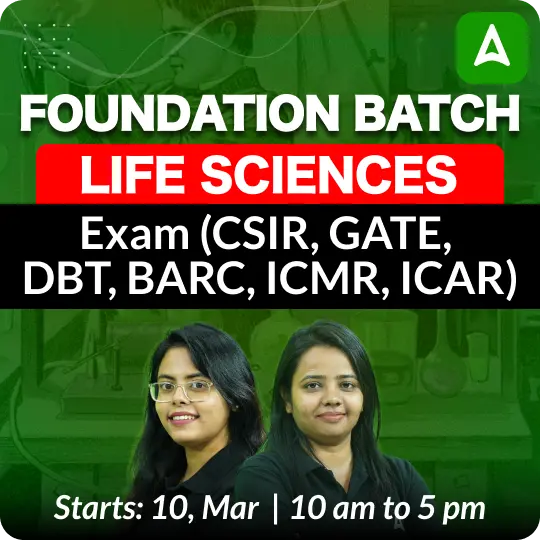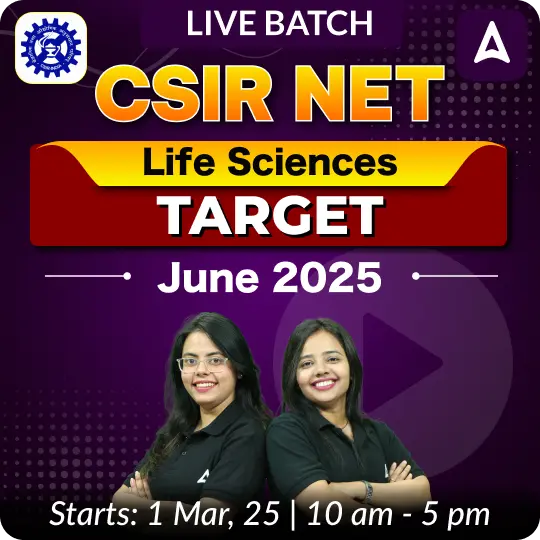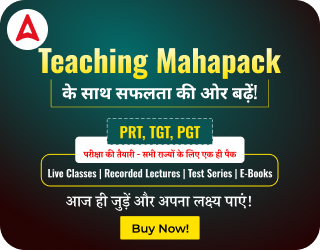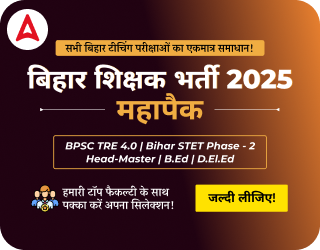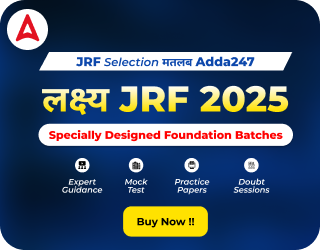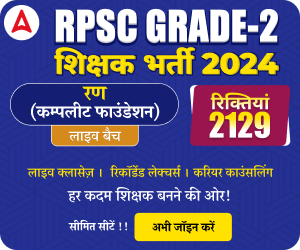Table of Contents
Candidates preparing for the KVS PGT Chemistry Exam 2025 must get access to the KVS PGT Chemistry Syllabus 2025 released by the KVS on their official website. They should read through the syllabus for a better understanding of the exam pattern, marks distribution, Marking scheme, negative marking and other important information which will lead the candidate to a better preparation for the exams. Candidates who aim to become a Chemistry Teacher in KVS under the upcoming KVS Teacher Recruitment 2025, must get started with studying the PGT Chemistry Syllabus 2025 as explained and PDF provided below.
KVS PGT Chemistry Syllabus
The KVS PGT Chemistry syllabus is structured to evaluate a candidate’s proficiency in English, language skills, teaching aptitude, and overall suitability for the Post Graduate Teacher (PGT) role. It aims to assess the essential competencies required to teach Chemistry at the senior secondary level in Kendriya Vidyalayas. A clear understanding of the KVS PGT Chemistry syllabus will enable candidates to streamline their preparation, concentrate on important topics, and enhance their chances of qualifying the exam successfully. This comprehensive syllabus ensures candidates are well-equipped to take on the role of a Post Graduate Teacher in Chemistry at Kendriya Vidyalayas.
KVS Post Graduate Teacher Chemistry Syllabus: Overview
The KVS PGT Chemistry Syllabus 2025 outlines the important subjects and topics that candidates need to study for the recruitment examination conducted by Kendriya Vidyalaya Sangathan (KVS). The selection process comprises a national-level online written test followed by an interview to evaluate the candidate’s subject knowledge and teaching aptitude. To perform well in the exam, candidates must stay updated with official notifications and thoroughly go through the latest syllabus. A focused and strategic preparation based on the syllabus will significantly improve their chances of success in securing the PGT Chemistry position.
| KVS PGT Chemistry Syllabus | |
| Organization Name | Kendriya Vidyalaya School |
| Conducting Body | Kendriya Vidyalaya Sangathan |
| Post Name | PGT Chemistry |
| Vacancies | Notified Later |
| KVS Job Profile | National |
| Mode of Application | Online |
| Mode of Examination | Online |
| KVS Selection Process | Written Test & Interview |
KVS PGT Chemistry Exam Pattern 2025
Understanding the KVS PGT Chemistry Exam Pattern 2025 is essential of the Study of the syllabus. This will provide insight into a number of questions asked, total marks allocated to the exam, marking scheme, and other important information. Read the following table in detail to know more about exam duration, number of papers, mode of exam, and language of exam.
| KVS PGT Chemistry Exam Pattern 2025 | |
| Total Marks | 180 marks |
| Total Number of Questions | 180 questions |
| Time Duration | 3 Hours (180 Minutes) |
| Medium of Examination | English/Hindi (Bilingual) |
| Type of Questions | Objective Type Multiple Choice Question |
| Number of Paper | Paper-I and Paper-II |
| PGT Concerned Subject | Chemistry |
KVS PGT Chemistry Marks Distribution
Candidates must comprehend that the KVS PGT Chemistry Exam 2025 is divided into four parts, which are further divided into a total of 7 subparts. The KVS Part I covers General English and Hindi (10 marks each), Part II includes General Awareness (10), Reasoning (5), and Computer Literacy (5), Part III focuses on Perspectives on Education and Leadership (40 marks), and Part IV tests Chemistry subject knowledge (100 marks). The exam is bilingual, objective-type, and conducted over 3 hours, ensuring a well-rounded evaluation of candidates.
| KVS PGT Chemistry Mark 2025 | |||
|---|---|---|---|
| KVS Exam | KVS Subjects | Number Of Ques. | Total Marks |
| PART- I | General English | 10 | 10 |
| General Hindi | 10 | 10 | |
| PART-II |
General Awareness & Current Affairs | 10 | 10 |
| Reasoning Ability | 5 | 5 | |
| Computer Literacy | 5 | 5 | |
| PART-III | Perspectives on Education and Leadership | 40 | 40 |
| PART-IV | Chemistry | 100 | 100 |
| Total | 180 | 180 | |
Detailed KVS PGT Chemistry Syllabus 2025
The KVS PGT Chemistry Syllabus 2025 is designed based on the NCERT/CBSE curriculum for Classes XI and XII, with questions aimed at evaluating in-depth understanding and application of concepts at the postgraduate level. The KVS PGT Chemistry exam not only tests subject knowledge but also evaluates teaching aptitude and the ability to apply mathematical concepts in real-life contexts, making it essential for candidates to thoroughly prepare each topic for success in the recruitment exam.
| Detailed KVS PGT Chemistry Syllabus 2025 | |
| Unit | Topics |
| Some Basic Concepts of Chemistry |
|
| States of Matter |
|
| Structure of Atom |
|
| Equilibrium |
|
| Surface Chemistry |
|
| Chemical Kinetics |
|
| Redox Reactions and Electrochemistry |
|
| Solutions |
|
| Chemical Bonding and Molecular Structure |
|
| Thermodynamics |
|
| Classification of Elements and Periodicity in Properties |
|
| Hydrogen |
|
| General Principles and Processes of Isolation of Elements |
|
| p-Block Elements |
|
| d and f Block Elements |
|
| Coordination Compounds and Organometallics |
|
| Organic Chemistry: Some Basic Principles and Techniques |
|
| Hydrocarbons |
|
| Environmental Chemistry |
|
| Haloalkanes and Haloarenes |
|
| Alcohols, Phenols, and Ethers |
|
| Aldehydes, Ketones, and Carboxylic Acids |
|
| Amines |
|
| Polymers |
|
| Biomolecules |
|
| Chemistry in Everyday Life |
|
KVS PGT Chemistry Syllabus PDF
Candidates preparing for the KVS PGT Chemistry exam can download the complete syllabus in PDF format from the link provided below. The KVS PGT Chemistry Syllabus PDF includes a detailed subject-wise breakdown, covering all important topics relevant to the concerned subject. This downloadable resource will help aspirants understand the exam pattern, prioritize topics, and plan their preparation effectively. It is advised to save the syllabus PDF for regular reference to ensure a focused and well-organized study strategy throughout the preparation journey.
| KVS PGT Chemistry Syllabus 2025 | |
| KVS PGT Chemistry Syllabus 2025 (General Paper) | Click Here |
| KVS PGT Chemistry Syllabus 2025 | Click Here |
| KVS 2025 Important Links | |
| KVS Vacancy 2025 | KVS Eligibility Criteria 2025 |
| KVS Syllabus 2025 | KVS Previous Year Question Paper |
| KVS Salary 2025 | KVS Selection Process 2025 |




 MP TET Varg 2 Science Secondary Teacher ...
MP TET Varg 2 Science Secondary Teacher ...
 MH SET Syllabus 2025 and New Exam Patter...
MH SET Syllabus 2025 and New Exam Patter...
 KVS PGT Syllabus 2025, Download PGT Syll...
KVS PGT Syllabus 2025, Download PGT Syll...
